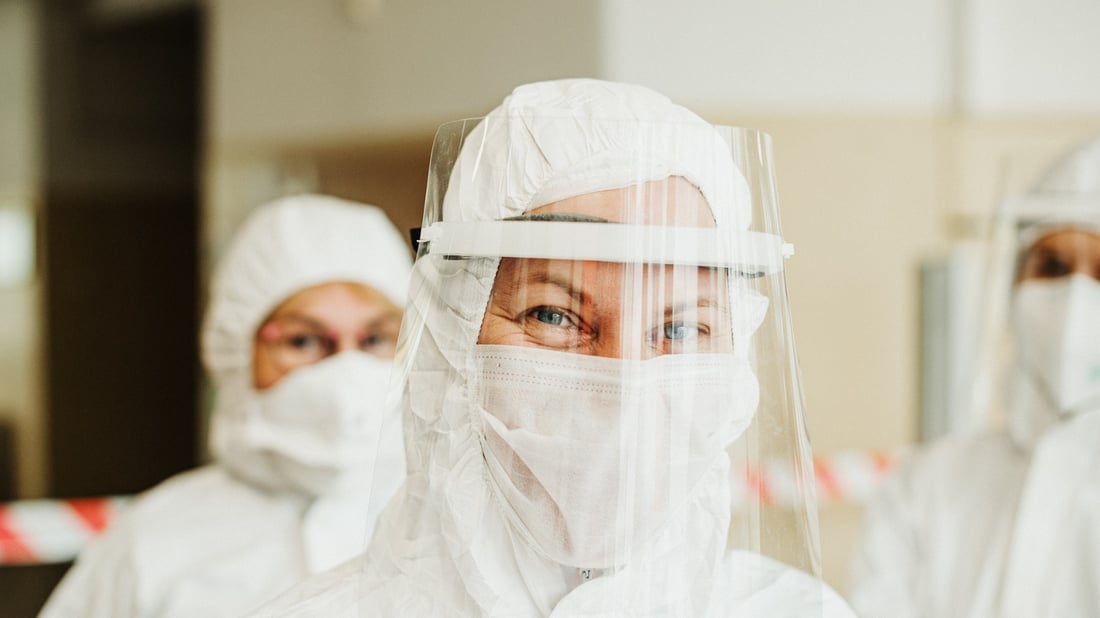A Guide to Different Types of Surgical Gowns: Materials, Features, and Uses
Surgical gowns are essential protective equipment for medical professionals. They come in different types, materials, and features, each designed for a specific purpose. Learn about the various types of surgical gowns and their unique characteristics, including their effectiveness in preventing infection, level of protection, and comfort.
Why Surgical Gowns are Important for Medical Professionals
Surgical gowns are an essential part of personal protective equipment (PPE) for medical professionals, especially those who are directly involved in surgery and other invasive procedures. The primary function of a surgical gown is to provide a barrier between the patient's body and the medical professional to prevent contamination and the spread of infection.
During surgery, medical professionals are exposed to various bodily fluids and substances that can carry harmful microorganisms such as bacteria, viruses, and other pathogens. Surgical gowns act as a protective barrier that can prevent these substances from reaching the medical professional's skin and clothing.
Moreover, surgical gowns also help to protect the patient from the medical professional's clothing, which can contain harmful microorganisms. By wearing a surgical gown, medical professionals can reduce the risk of surgical site infections and other healthcare-associated infections, which can have serious consequences for patients.
Surgical gowns come in different types, sizes, and materials, depending on the level of protection required and the type of procedure being performed. Some surgical gowns are disposable and are designed for one-time use, while others are reusable and can be washed and sterilized before reuse.
In summary, surgical gowns are important for medical professionals because they provide a crucial barrier of protection against infection and contamination during surgical procedures. By wearing a surgical gown, medical professionals can reduce the risk of transmission of harmful microorganisms between patients and themselves, as well as protect patients from contamination from the medical professional's clothing.
Different Types of Surgical Gowns: A Comprehensive Guide
Surgical gowns are essential protective apparel for medical professionals performing surgeries and other procedures in hospitals and clinics. There are various types of surgical gowns available, each designed for specific purposes and situations. Here's a comprehensive guide to the different types of surgical gowns:
Disposable surgical gowns: These are made of nonwoven fabric and are designed for single-use only. They provide a cost-effective option for surgical procedures that require minimal protection.
Reusable surgical gowns: These are made of tightly woven cotton or cotton blend fabrics that can be laundered and sterilized for multiple uses. Reusable gowns are more environmentally friendly than disposable gowns but can be more expensive to purchase initially.
Level 1 surgical gowns: These are low-risk gowns that are designed for procedures that have a low risk of exposure to bodily fluids or blood. They are usually made of lightweight, fluid-resistant materials.
Level 2 surgical gowns: These are medium-risk gowns that are designed for procedures with a moderate risk of exposure to bodily fluids or blood. They are typically made of a heavier weight, fluid-resistant material than level 1 gowns.
Level 3 surgical gowns: These are high-risk gowns that are designed for procedures with a high risk of exposure to bodily fluids or blood. They are made of heavy-duty, fluid-resistant material and may have additional features like reinforced areas or extra layers of protection.
Impervious surgical gowns: These gowns are designed to provide maximum protection against fluid penetration and are typically used in high-risk procedures. They are made of a nonporous material like plastic or coated fabric.
Chemotherapy surgical gowns: These gowns are designed for medical professionals who handle chemotherapy drugs. They are made of a special material that provides a barrier against hazardous chemicals and can be disposed of safely after use.
When choosing a surgical gown, it's important to consider the level of protection required for the procedure, the comfort and mobility of the wearer, and the ease of donning and doffing the gown. Medical professionals should also ensure that the gown meets relevant safety and regulatory standards.
Materials Used in Surgical Gowns and Their Characteristics
Surgical gowns are made from a variety of materials, each with different characteristics that make them suitable for different applications. Here are some of the most common materials used in surgical gowns:
Non-Woven Fabrics: These are the most commonly used materials in surgical gowns. Non-woven fabrics are made from fibers that are bonded together using heat, chemicals, or mechanical processes. They are lightweight, breathable, and fluid-resistant. Some examples of non-woven fabrics used in surgical gowns include spun-bond polypropylene and spunlace.
Poly-Reinforced Fabric: This material is made by bonding a layer of polyethylene to a layer of non-woven fabric. It provides excellent protection against fluids and is often used in high-risk surgical procedures.
Polypropylene: This is a thermoplastic polymer that is widely used in surgical gowns. It is lightweight, breathable, and provides excellent fluid resistance.
SMS Fabric: SMS stands for "spunbond-meltblown-spunbond." This is a type of non-woven fabric that is made by combining three layers of material. The outer layers are made from spunbond polypropylene, while the middle layer is made from meltblown polypropylene. SMS fabric provides excellent protection against fluids and is often used in high-risk surgical procedures.
Cotton: Cotton is a natural fiber that is sometimes used in surgical gowns. It is comfortable, breathable, and absorbent, but it is not as fluid-resistant as synthetic materials.
Polyester: Polyester is a synthetic fiber that is sometimes used in surgical gowns. It is lightweight, breathable, and provides excellent fluid resistance.
Overall, the choice of material for a surgical gown depends on the specific application and level of protection required. Medical professionals should choose a gown that provides the necessary level of protection while also being comfortable to wear during long procedures.
Features and Design of Surgical Gowns: Which One is Right for You?
Surgical gowns are designed to provide protection for both patients and healthcare workers during surgical procedures. They are available in various designs, materials, and sizes to cater to different needs. The following are some features and designs of surgical gowns that you should consider when choosing the right one:
Disposable or Reusable: Surgical gowns can be either disposable or reusable. Disposable gowns are made for one-time use, while reusable gowns can be washed and reused. Reusable gowns are typically made from more durable materials and are more cost-effective in the long run.
Material: Surgical gowns can be made from a range of materials, including polyester, polypropylene, and polyethylene. The choice of material depends on the level of protection required, comfort, and durability.
Level of Protection: Surgical gowns are classified into four levels of protection based on their ability to resist fluid penetration. Level 1 gowns are used for low-risk procedures, while Level 4 gowns are used for high-risk procedures that involve large amounts of blood and body fluids.
Sleeve Length: The sleeve length of surgical gowns can vary from short sleeves to long sleeves with elastic cuffs. Longer sleeves provide greater coverage and protection.
Back Closure: Surgical gowns can have either a tie-back or hook-and-loop closure at the back. Hook-and-loop closures are more secure and easier to use than tie-back closures.
Neck Closure: The neck of surgical gowns can be either closed or open. Open-neck gowns are more comfortable to wear, but closed-neck gowns provide greater protection.
Size: Surgical gowns are available in a range of sizes to fit different body types.
When choosing the right surgical gown, it's essential to consider the procedure's level of risk and the level of protection required. You should also consider comfort, ease of use, and the durability of the gown. Additionally, make sure to follow the manufacturer's instructions for use and disposal to ensure maximum safety and effectiveness.
Best Practices for Using and Maintaining Surgical Gowns
Using and maintaining surgical gowns properly is essential to ensuring their effectiveness in providing protection to healthcare workers and patients. Here are some best practices to follow:
Proper use: Always follow the manufacturer's instructions on how to properly wear and remove the surgical gown. Make sure to fully cover your torso, from neck to knees and wrists, and secure the gown tightly.
Donning and doffing: Make sure to don and doff the gown in a designated area to prevent cross-contamination. Follow the proper sequence when donning and doffing to prevent contamination.
Inspect the gown: Before use, inspect the surgical gown for any defects or tears. If any defects or tears are found, the gown should be discarded and replaced.
Storage: Store surgical gowns in a clean, dry area that is free of contaminants. Keep the gowns in their original packaging until ready for use.
Laundering and sterilization: Follow the manufacturer's instructions for laundering or sterilizing the surgical gowns. Some surgical gowns are disposable and should be discarded after a single use. Others are reusable and must be laundered or sterilized after each use.
Replacement: Replace the surgical gown if it becomes soiled or contaminated during use. Also, replace the gown if it becomes torn or damaged.
Training: Make sure all healthcare workers who will be using surgical gowns are properly trained for proper use, donning and doffing, and storage of gowns.
By following these best practices, healthcare workers can help ensure the effectiveness of surgical gowns in preventing the spread of infection and protecting both healthcare workers and patients.
Note: Please keep in mind that this article should not make any false or misleading claims about the effectiveness of surgical gowns in preventing the spread of infection. The primary focus should be on the different types and features of surgical gowns available for medical professionals.

